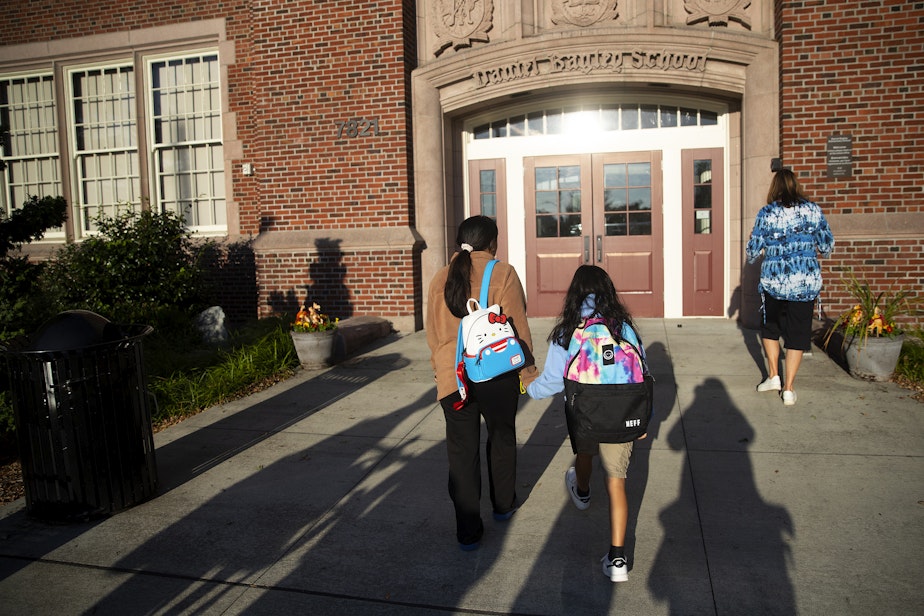With school closures looming, Seattle Public Schools passes belt-tightening budget

Seattle Public Schools' newly-passed budget closes a nearly $105 million budget gap — and tees up probable school closures in the fall of 2025.
The school board unanimously approved the budget Tuesday, despite concerns from some that it doesn't adequately address the issues at the root of the district's ongoing deficit spending.
Officials say they've aimed to keep cuts as far away from students and teachers as possible. But students and families may still notice some belt-tightening next year.
For example, class sizes will increase slightly at middle and high schools to 31 students per teacher. The move means the district will save about $7 million on school staffing.
And students will once again pay athletic fees of $200 per sport, unless they can't afford it. If a student participates in more than one sport, the fee is capped at $400 for the year. The district eliminated the fees during the 2015-16 school year, but officials are bringing it back to raise about $1 million in revenue.
RELATED: How will Seattle Public Schools leaders decide which elementary schools should close?
Sponsored
Outside of classrooms and school buildings, the district also is making about $8 million in cuts to staffing and other expenses in the central office to cover the deficit.
The district will also borrow $27.5 million from its capital fund for building construction and maintenance. That's part of the reason former board member Vivian Song called on the board to reject the latest budget.
At last week's board meeting, she said it's too risky to assume the district can repay the loan — with interest, by June of 2026 — by closing schools.
Instead, Song said the board should put the district into state financial oversight, something the Marysville school district recently did.
"SPS has exhausted all they can do. It's time for state intervention," said Song, who represented Seattle schools District 4 from 2021 to earlier this year, when she resigned amid concerns she was violating state residency requirements.
Sponsored
"Don't throw the dice that school closures will solve our budget woes," she continued. "The risk/reward is not there, not when it so directly impacts kids."
RELATED: Seattle delays decision on which schools will close
District officials have estimated about $1.5 million of savings per closed school, and if they close 20 elementary schools, as proposed, that totals $30 million. If the district doesn't consolidate, leaders say the tradeoffs would be larger class sizes and about 157 layoffs.
Last week, Song questioned whether those anticipated savings take into account further enrollment losses because of school closures. Even if a school is only moved temporarily to be rebuilt or renovated, Song said enrollment dips sharply.
While Song acknowledged "there are no good options" in such a dire financial situation, she said state intervention would allow the district to make needed structural changes.
Sponsored
Tuesday's vote puts an end to another challenging budget season for Seattle schools — and signals even more difficult conversations are ahead.
In a letter to the community, introducing the 2024-25 budget book, Superintendent Brent Jones warns the district has run out of one-time cost-cutting measures and must consider longer-term solutions like closing schools as the system continues to face declining enrollment and chronic underfunding from the state.
"The district can go in one of two directions — we can make further cuts to services, staff, and supports in all schools, or we can maintain and plan to enhance student services and supports with a reduction in the number of elementary schools to match elementary school enrollment," he wrote.
"We must consider which is the greater priority — the location of the school building or the services and educational opportunities available to students when they are at school."




